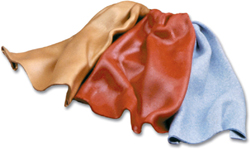Chase Fountain, a thoughtful and talented man, he photographed every step .
Kimberly Mackenzie, a gifted book designer and graphic artist, she juggled hundreds of images and thousands of words .
Keith Scroggins, Britt Myers, and Don Denney, each a craftsman whose knowledge and guidance made this book possible .
Hope Phillips, Jan Walcott, Jorge Sanchez of Polyform Products; Donna Kato and the Van Aken company; and Peter Dyne of Golding Handcrafts. Each fulfilled every request and answered every question
Table of Contents
Part 1 A Medium for Everyone
Polymer Clay Fundamentals
Part 2 Figure Fundamentals
An Overview of Figurative Modeling
Part 3 Fundamental Tools
The Essential and Nonessential Tool Kit
Part 4 Face to Face
Modeling the Head and Face
Part 5 The Body in Question
Modeling the Torso
Part 6 A Leg to Stand On
Modeling the Leg & Foot
Part 7 A Show of Hands
Modeling the Hand & Arm
Part 8 Measure for Measure
Modeling in a Smaller Scale
Part 9 Costumes of Clay
Dressing the Sculpture in Polymer Clay
Part 10 Finishing Touches
Adding Details with Paint and Fiber
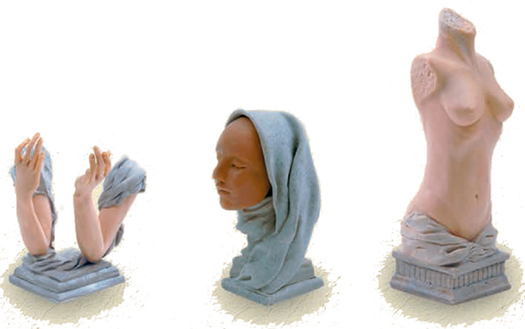
Introduction
I am an amateur at heart. I sculpt for the love of it. Thats what the word amateur meansone who loves. I cannot resist creating new shapes in wet sand, new fallen snow, fresh cement, or cold mashed potatoes. Im also a professional. Sculpting is my livelihood, and polymer clay is my favorite medium. No other clay is as colorful, versatile, or widely available. No other clay drives me to explore the possibilities. No other clay urges me to ask What if?
What if I wrote a book about the art of figure modeling in polymer clay? What if I wrote that book with the amateur in mind? The amateur, in the truest sense of the word, has a love of art and sculpture. The amateur is ready to take the first step into the artists realm. This book is about that first step and those that follow. It will take you along a different path than other books on the subject of realistic figure modeling. Why? Because polymer clay is a thoroughly modern product, not bound by tradition. Nan Roche called it the new clay. Why not use new methods?
Taken as a whole, the figure is complex. Why not break it down? Break everything down: proportions, body parts, armature, and clay. Break the body down part by part, and break the parts down form by form. Separate parts mean separate armatures, the bones of the sculpture. Break the clay down, too, into measured amountsso much for each form, so much for each body part. Break it down and then put it back together again. Taken as parts of the whole, the complex figure becomes simple enough for the amateur. I am an amateur at heart.
PART ONE
A Medium for Everyone
P olymer clay is unique, a remarkable clay that requires no special tools, not even a kiln. Its wide availability has made it the first clay for amateurs and the the clay of choice for many professionalssculptors who have designed one of a kind dolls, modeled figures for the toy and collectable industries, and created miniatures and masks for the movies. There is no other clay quite like it.
This man-made clay is a medium for the new millennium. Polymer clay is composed of fine PVC particles suspended in a liquid called a plasticiser. The plasticiser gives the clay its flexibility. Fillers, such as natural earth clays and chalks, add bulk. Pigments add color. Baking the clay at the right temperature (between 200 and 275 F) fuses all of the ingredients into a hard plastic.
F) fuses all of the ingredients into a hard plastic.
Polymer Clays are low temperature clays, sensitive to heat, some more so than others. The warmth of your hands or the heat of a summer day can make them softer. Too much heat (above 90 F) over too long a time will partially bake the clay, but dont assume firm clay has been partially baked, even if it crumbles. It may simply be old. As polymer clay ages, fillers absorb some of the plasticiser and the clay loses some of its pliability. Clay softeners such as Sculpey Diluent, Kato Liquid Conditioner, and Fimo Mix Quick can extend the life of these advanced clays, but often they just need to be kneaded. Once kneaded, they become pliable.
Clays from all over the world illustrate a fraction of the colors available. Most companies manufacture both small blocks and large bricks, and most offer a range of colors, including pastels, flesh blends and specialty clays. While brands differ in subtle ways, all share one important traitthey urge the artist to explore the possibilities .
The Perfect Polymer Clay?
For the artist who sculpts, the perfect polymer clay blends easily. Its firm enough to hold its form, yet soft enough to model and drape. The perfect clay has a long working time, remains color faithful after baking, and resists breakage. Thats the perfect clay for modeling, but, no brand has all of those qualities. The clays easiest to blend, Super Sculpey, Sculpey III and Premo, tend to scorch if baked too long. The most flexible clays after baking, Cernit and Modelene, are difficult to blend. The same is true for the firmest clay, Creal-Therm. The most color faithful clay, Kato, has a short working time. Because no clay has all of the qualities artists desire, artists adapt. They choose the clay that suits the way they work and work in ways that give them the control they need.
Cernit A German clay prized by doll artists for its porcelain texture and durability, Cernit responds quickly to the heat of your hands, becoming very soft. Many artists mix this clay with a more blendable brand to improve its workability. Available in 27 colors.



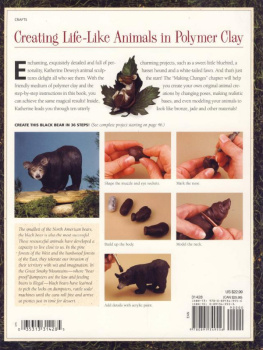



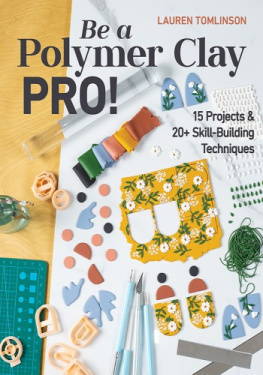
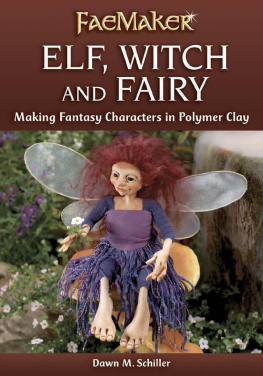

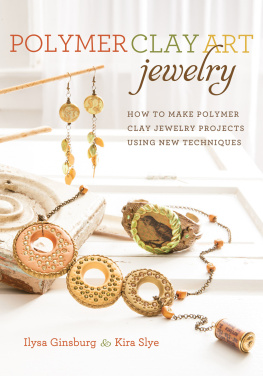




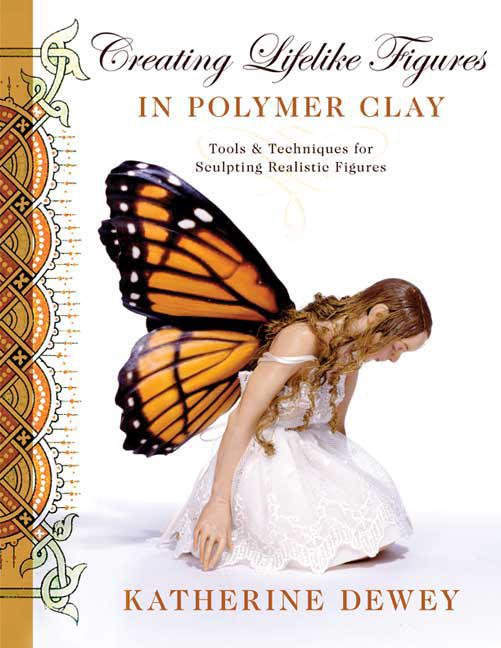
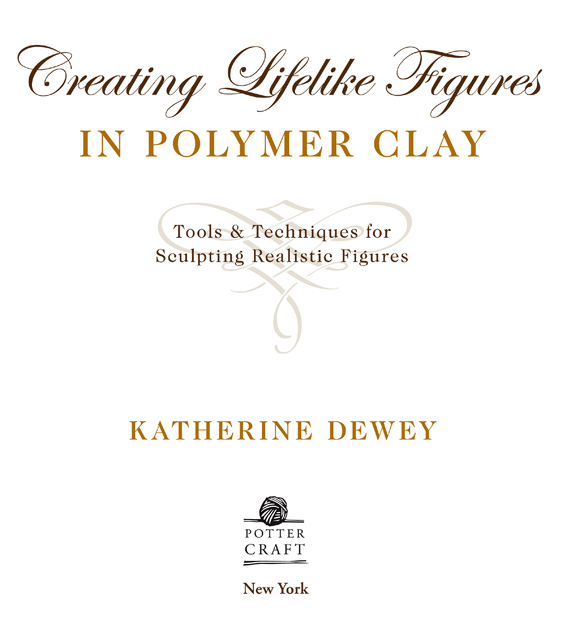

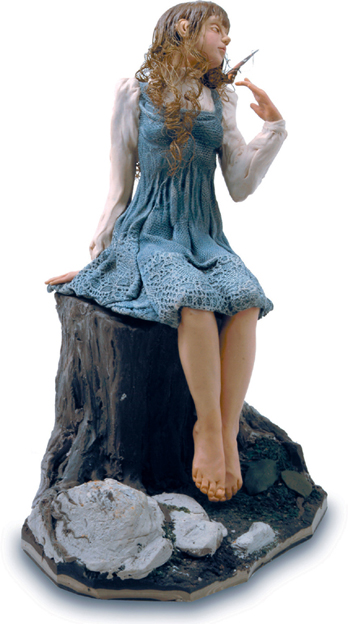
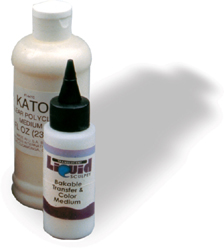
 F) fuses all of the ingredients into a hard plastic.
F) fuses all of the ingredients into a hard plastic.
